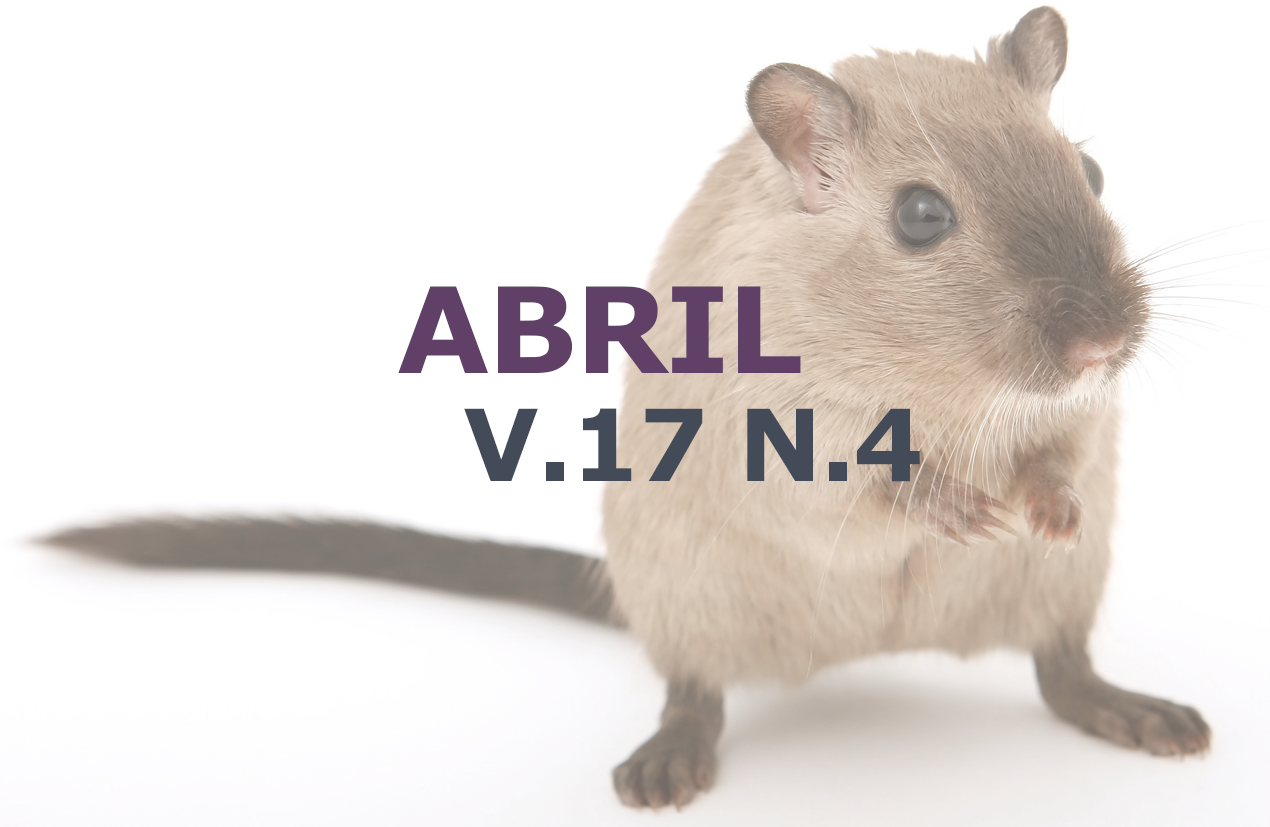Acquired Myasthenia gravis in a Golden Retriever dog: Case report
DOI:
https://doi.org/10.31533/pubvet.v17n04e1369Keywords:
autoimmune; megaesophagus; neostigmine; neuromuscular; pyridostigmineAbstract
Myasthenia gravis (MG) is the most common neuromuscular disease in dogs and cats. Its clinical manifestations vary depending on their classification, and can be classified as focal or generalized, and congenital or acquired. It commonly results in megaesophagus and aspiration pneumonia, and it is very important that both diseases are identified and treated. The gold standard for the diagnosis of MG in dogs and cats is the measurement of autoantibody concentration against nicotinic acetylcholine receptors (AChR) by radioimmunoassay. However, another method is the administration of acetylcholinesterase inhibitors for this diagnosis, in which an explicit improvement of muscle weakness is expected. Treatment is based on the use of acetylcholinesterase inhibitors, such as Pyridostigmine Bromide and Neostigmine, immunosuppressants, and supportive care. With this study, the aim was to report the case of an elderly dog, Golden Retriever breed, diagnosed with an acquired Myasthenia gravis that evolved from focal to generalized, and developed secondarily into megaesophagus and aspiration pneumonia.
References
Andrade et al. (2007)
Barone, G. (2015). Tratado de medicina veterinária. Guanabara Koogan S.A.
Cunningham, J. (2011). Tratado de fisiologia veterinária. Guanabara Koogan.
Dewey, C. W., Bailey, C. S., Shelton, G. D., Kass, P. H., & III, G. H. C. (1997). Clinical forms of acquired myasthenia gravis in dogs: 25 cases (1988–1995). Journal of Veterinary Internal Medicine, 11(2), 50–57. https://doi.org/10.1111/j.1939-1676.1997.tb00073.x.
Ettinger, S. J., Feldman, E. C., & Cote, E. (2017). Textbook of Veterinary Internal Medicine-eBook. Elsevier Health Sciences.
Fossum, T. W. (2015). Cirurgia de pequenos animais (3ed.). Elsevier Editora.
Gonçalves, B. A. L., Vianna, L. R., & Andrade, C. C. (2019). Terapia Neural no tratamento do megaesôfago congênito em cão: relato de caso. PUBVET, 13(9), 1–6. https://doi.org/10.31533/pubvet.v13n9a415.1-6
Hawkins, E. C. (2004). Doenças do Parênquima Pulmonar. In: Ettinger, S. J., Feldman, E. C. Tratado de Medicina Interna Veterinária. 5.ed. 1120-1150. Guanabara Koogan, Rio de Janeiro, RJ, BR.
Laflamme, D. P. (1977). Development and validation of body condition score system for dogs: a clinical tool. Canine Practice, 22(3), 10–15.
Mace, S., Shelton, G. D. & Eddlestone, S. (2012). Megaesophagus. Compendium, 34(2), E1–E1.
Machado, L. H. A., Castro, N. C. N., Barbosa, L. C., & Zahn, F. S. (2016). Megaesophagus secondary to myasthenia gravis. Veterinária e Zootecnia, 23(3), 347–355.
Martins, G. C., Torres, B. B. J., Veado, J. C. C., Melo, E. G. (2012). Revista científica de medicina veterinária – pequenos animais de estimação, 10(33), 1-637.
Mignan, T., Garosi, L., Targett, M., & Lowrie, M. (2020). Long-term outcome of cats with acquired myasthenia gravis without evidence of a cranial mediastinal mass. Journal of Veterinary Internal Medicine, 34(1), 247–252. https://doi.org/10.1111/jvim.15655.
Mignan, T., Garosi, L., Targett, M., & Lowrie, M. (2020). Classification of myasthemia gravis and congenital myssthemes in dogs and cats. Journal of Veterinary Internal Medicine, 34(5), 1707–1717.
Miller, L. M., Lennon, V. A., Lambert, E. H., Reed, S. M., Hegreberg, G. A., Miller, J. B., & Ott, R. L. (1983). Congenital myasthenia gravis in 13 smooth fox terriers. Journal of the American Veterinary Medical Association, 182(7), 694–697.
Monnet, E., & Twedt, D. C. (2003). Laparoscopy. Veterinary Clinics: Small Animal Practice, 33(5), 1147–1163.
Nelson, R. (2011). Medicina interna de pequenos animais. Elsevier Brasil.
Nelson, R., & Couto, C. G. (2015). Medicina interna de pequenos animais (3.ed.). Elsevier Brasil.
Rodrigues, D. S. A., Soares, L. L. S., Rodrigues, R. P. S., Santos, M. M., Barros, D. A., Barbosa, Y. G. S., & Rodrigues, M. C. (2016). Esofagotomia torácica para remoção de corpo estranho associado a megaesôfago em cão. PUBVET, 10(8), 615–618. https://doi.org/10.22256/pubvet.v10n8.615-618.
Souza, I. R., Bomfim, L. T., Dias, S. R. M., & Santos, K. L. O. (2022). Megaesôfago em cães: Revisão. PUBVET, 16(3), 1–6. https://doi.org/10.31533/pubvet.v16n03a1059.1-6.
Stockham, S. L., & Scott, M. A. (2011). Fundamentos de patologia clínica veterinária. In Guanabara Koogan (Vol. 8).
Tanaka, N. M., Hoogevonink, N., Tucholski, Â. P., Trapp, S. M., & Frehse, M. S. (2010). Megaesôfago em cães. Revista Acadêmica Ciência Animal, 8(3), 271–279.
Washabau, R. J., & Day, M. J. (2012). Canine and Feline Gastroenterology-E-Book. Saunders Company.
Willard, M. D. (2010). Distúrbios do sistema digestório. In W. Richard, C. Nelson, & G. Couto (Eds.), Medicina Interna de Pequenos Animais. Elsevier.
Downloads
Published
Issue
Section
License
Copyright (c) 2023 Letícia Caetano Zaiden, Júlia de Miranda Moraes

This work is licensed under a Creative Commons Attribution 4.0 International License.
Você tem o direito de:
Compartilhar — copiar e redistribuir o material em qualquer suporte ou formato
Adaptar — remixar, transformar, e criar a partir do material para qualquer fim, mesmo que comercial.
O licenciante não pode revogar estes direitos desde que você respeite os termos da licença. De acordo com os termos seguintes:
Atribuição
— Você deve dar o crédito apropriado, prover um link para a licença e indicar se mudanças foram feitas. Você deve fazê-lo em qualquer circunstância razoável, mas de nenhuma maneira que sugira que o licenciante apoia você ou o seu uso. Sem restrições adicionais
— Você não pode aplicar termos jurídicos ou medidas de caráter tecnológico que restrinjam legalmente outros de fazerem algo que a licença permita.





